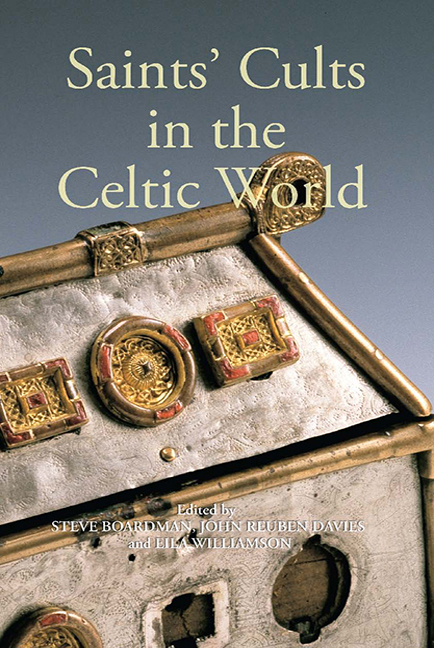Book contents
- Frontmatter
- Contents
- List of Illustrations
- List of Contributors
- Abbreviations
- Editors’ Preface
- 1 Rochester, Hexham and Cennrígmonaid: the movements of St Andrew in Britain, 604–747
- 2 The cults of Saints Patrick and Palladius in early medieval Scotland
- 3 Personal names and the cult of Patrick in eleventh-century Strathclyde and Northumbria
- 4 Bishop Kentigern among the Britons
- 5 Adjacent saints’ dedications and early Celtic History
- 6 Cuthbert the cross-border saint in the twelfth century
- 7 David of Scotland: ‘Vir tam necessarius mundo’
- 8 The cult of Saint George in Scotland
- 9 The cult of the Three Kings of Cologne in Scotland
- 10 The medieval and early modern cult of St Brendan
- General Index
- Miscellaneous Endmatter
4 - Bishop Kentigern among the Britons
Published online by Cambridge University Press: 11 May 2017
- Frontmatter
- Contents
- List of Illustrations
- List of Contributors
- Abbreviations
- Editors’ Preface
- 1 Rochester, Hexham and Cennrígmonaid: the movements of St Andrew in Britain, 604–747
- 2 The cults of Saints Patrick and Palladius in early medieval Scotland
- 3 Personal names and the cult of Patrick in eleventh-century Strathclyde and Northumbria
- 4 Bishop Kentigern among the Britons
- 5 Adjacent saints’ dedications and early Celtic History
- 6 Cuthbert the cross-border saint in the twelfth century
- 7 David of Scotland: ‘Vir tam necessarius mundo’
- 8 The cult of Saint George in Scotland
- 9 The cult of the Three Kings of Cologne in Scotland
- 10 The medieval and early modern cult of St Brendan
- General Index
- Miscellaneous Endmatter
Summary
Saint Kentigern, Bishop and Confessor, also known as Mungo, is patron of Glasgow. He is co-patron too, with Saint Asaph, of Llanelwy in North Wales. And in common with so many of Britain's earliest saints we have no sure knowledge of him from his own time.
Weariness may set in as one repeats a commonplace topos, reminding the reader of the meagre sources for this period. But a stock theme though it may be, the near absence of written evidence, and the troublesome nature of what survives, conditions the task in hand. For where there is a gap there is always a temptation to fill it. Like neo-gothic architects of the nineteenth century, historians from all eras have either rebuilt ruined edifices or pulled down old ones, reconstructing them according to particular ideals and contemporary needs. For the student of the sixth and seventh centuries, whether one reads Bede from the eighth century, or the authors of the twelfth, the exercise is like examining Barry and Pugin's Palace of Westminster for an impression of the earlier building. If we are lucky there might be a Westminster Hall or a St Stephen's Cloister from the medieval complex, but the largest part is mere (architectural) propaganda. That magnificent late overlay of a medieval ideal has, besides, a tendency to embed itself in the popular imagination, so it becomes difficult to envisage the largely plain, unimpressive, higgledypiggledy ‘assemblage of combustible materials’ that stood there before.
In the case of Kentigern, we have nothing so certain as a Westminster Hall at the heart of the late structure. The root of the popular and tenacious picture of the saint is twelfth-century legendary biography. And that picture is pervasive and influential, contaminating even the scholarly literature on the subject.
Several works in the genre of hagiography deal with Glasgow's patron. The earliest of these Lives of St Kentigern to have come down to us is a fragmentary one, written at the request of Bishop Herbert during his episcopate at Glasgow, 1147–64. The apparently anonymous author tells us it was composed in emulation of Simeon of Durham's Life of St Cuthbert, and gives an account of the conception and birth of Kentigern, but the surviving text breaks off early on in the story.
- Type
- Chapter
- Information
- Saints' Cults in the Celtic World , pp. 66 - 90Publisher: Boydell & BrewerPrint publication year: 2009



